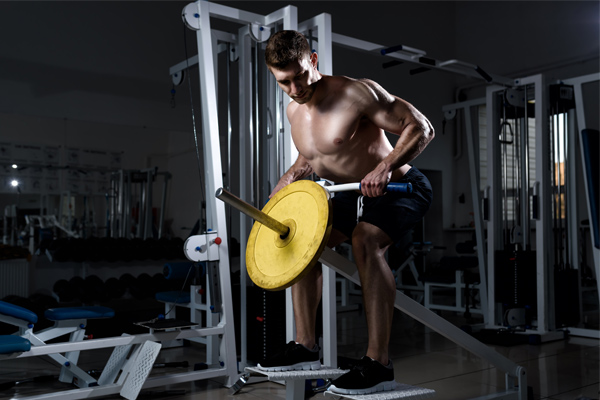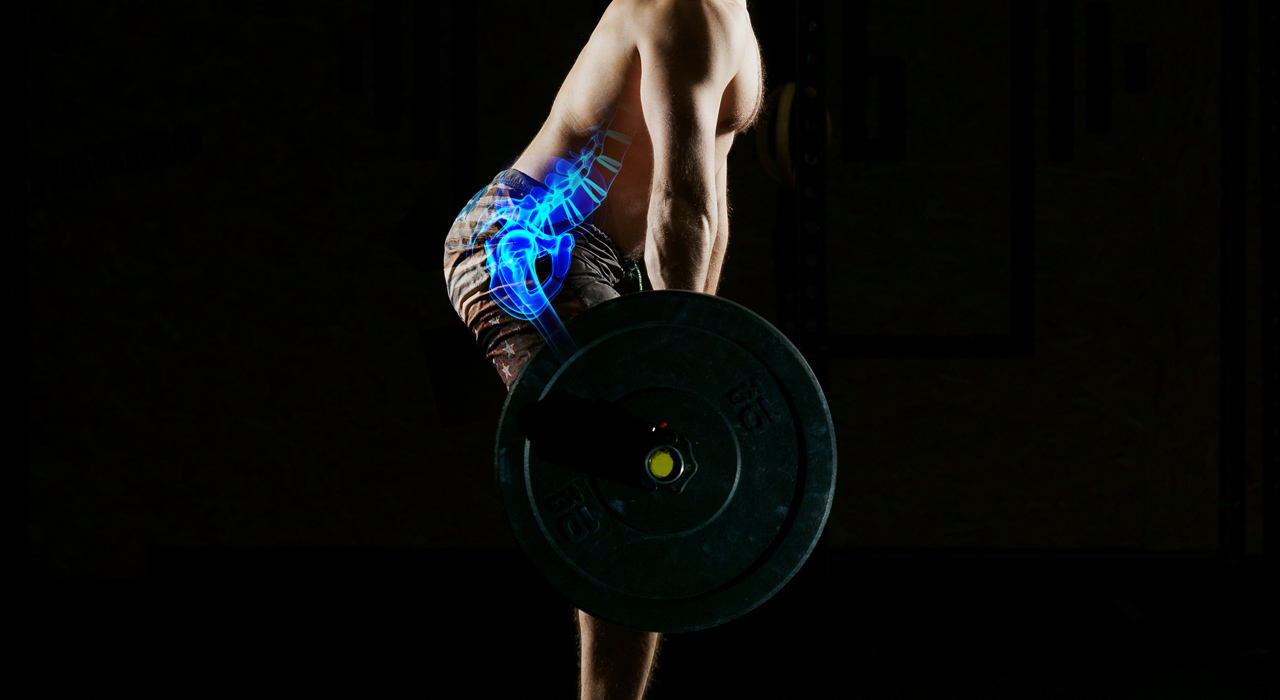Injuries are hard to avoid when training regularly and pushing your limits. It’s part and parcel of the territory, but the problem with a severe lower back injury from lifting is how difficult it can be to bounce back from. The more severe back injuries will not only keep you sidelined from the gym, but can massively affect the quality of your day-to-day life too.
All hope is not lost, though – TRAIN has got you covered with some things you should take into account to ensure you can continue your training for years to come without a lumbar spine injury.
Lower back injury from lifting? Don’t put your back into it
Your lower back is one of the most important. A study published in the Open Biomedical Engineering Journal investigated the back and joint health of 50 lifters to find that 82% of them had symptoms of lumbar diseases predominantly caused by waist strain, weight intensities being too large or poor lifting form.
Conclusions from the study found that once the lumbar spine gets injured, it’s very hard to cure and could affect a lifter for the rest of their life. So, how can we go about ensuring we aren’t a part of that 82% who are in a world of hurt?

Lifting technique and form is king
To protect your lumbar spine and get some serious thanks from your future self, whether you’re training or in competition, take care and research proper form when lifting; always keep your back straight.
While tempting, and always from a place of positive intention, cranking up the weight before you’re ready can be a one-way ticket to snap city, as some famous YouTube twins would rightly say. A general rule of thumb would be, if you can’t keep your lumber spine flat when performing back exercises, you probably need to lower the load before you do yourself some damage.
Practice creating Intra-abdominal pressure (IAP)
A study in the European Spine Journal found that creating intra-abdominal pressure, added up to 30% extra trunk stiffness while lifting, depending on how well the abs were braced. Extra trunk stiffness is most welcome while lifting, since you want very little wiggle room in the spine while pulling a heavy load.
But, how do we create intra-abdominal pressure? Heck, what even is IAP?
Well, intra-abdominal bracing will probably feel alien to you at first – especially, if you’ve had the pleasure of working with a commercial gym personal trainer. Most PT’s will tell their clients to draw their ‘belly button into the spine’ which barely causes any IAP at all.
On the contrary, the way to look at bracing your core is to imagine Mike Tyson is about to land a body shot to your gut. Actually, let’s not imagine that. I want you to brace your core, not evacuate your bowels – but hopefully, you see what I’m getting at.
If someone is aiming a punch at your stomach, your instinct would not be to suck in your stomach but to tense your abs as hard as you can. If anything, you’re more likely to push the stomach out, and that’s ok. Combine this by also tensing/pushing your lower back in the other direction and you will have creating some intra-abdominal pressure. Practice this bracing technique until it no longer feels alien.
This is the feeling you’ll want to create trunk stiffness for added protection to your lumbar spine and avoid a lower back injury from lifting.

Wear a weightlifting belt
In the same study above from the Department of Orthopaedics of Yale University, one group also used lifting belts to attempt to augment intra-abdominal pressure. This worked a charm as the belts added between an extra 9-57% trunk stiffness depending on how well the candidates could brace their core and the direction of force that was tested.
Contrary to popular belief, wearing the belt didn’t deactivate any of the muscles that make up the core. Out of the 12, only 2 of the musculature that make up the core experienced less activity, and this was only in a single direction; the thoracic (mid back) erector spinae while in extension and the lumbar erector spinae while in flexion.
Finally, the belt also works well as a target to brace your stomach against, so it could serve as a constant reminder to set your core up correctly before starting a lift.
Definitely a worthy purchase. Ideally, you want a durable, leather belt that remains the same height all the way across (rather than the belts that get thicker around your lower back).
An example of a solid belt would be this Schiek Competition Belt from Bodybuilding.com
Hopefully with these tips, you can enjoy a pain-free lifting experience and spend more time making, and mirin’ your gains.
For more articles about how to avoid a lower back injury from lifting, workouts, and interviews, get TRAIN magazine direct into your inbox every month for free by signing up to our newsletter
References:
https://www.ncbi.nlm.nih.gov/pubmed/10552322 – Lumbar spine stability can be augmented with an abdominal belt and/or increased intra-abdominal pressure.







